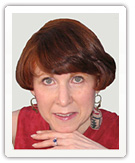e-Tips
How Lack of Nonverbal Cues Hinders Cross-Generational Communication
It’s obvious to just about everyone that we have been witnessing fundamental changes in communication media and styles, accelerating markedly in the last 10 years. Technology and the market have led the way to faster, more efficient, smaller, always on media; communication styles have followed and adjusted, causing generational and occupational divides. We have seen that most efficient is often not most effective. What is being lost?
My August Inter-Generational Relations e-Tip was a checklist of differences in and perceptions of communications styles among the generations. (Request it from pwhaserot@pdcounsel.com if you didn’t see it.) On a related point, in a fascinating article on the “Taste” page of the Wall Street Journal (August 28, 2009), Mark Bauerlein makes a powerful case for the need to bridge the gap between the Gen Y texting culture (my term) and use of what anthropologist Edward T. Hall called “the Silent Language,” nonverbal cues or body language and voice tone. Mr. Bauerlein is a professor of English at Emory University.
Spending so much time with texting and e-mail as well as Facebook from a young age, Gen Y has developed less skill than previous generations reading nonverbal cues and interpreting tone of voice, pauses, etc., that can be experienced in person or on the phone. Gen Yers use cell phones more for texting than for voice calls. It seems the lack of nonverbal communication experience would impede interviewing skills and negotiating skills. The primarily electronic communicators are missing expressive behaviors which transmit feelings, attitudes, reactions and judgments. This becomes even more significant and potentially damaging in the cross-cultural circumstances of a world of global economic and political dependency.
And many Gen Yers don’t realize that others, particularly other generations, do see non-verbal meaning in behavior such as checking e-mail, etc. during meetings and not looking at a person who is talking to them because they are multi-tasking.
While it may reduce tensions for other generations to realize that this behavior is not intentionally rude, but rather is just young people acting on what they know (or don’t know), the fact is the latter tend not to be well equipped for negotiations, interviewing, navigating the “political” dynamics of the workplace, or even their own job interviews. These have always been vital business skills.
I suppose one could argue that as more business is done electronically, skills in reading nonverbal cues won’t be as important. How valid is that? Will interaction become so depersonalized?
For the time being, negotiating, interviewing and influencing skills remain central to success for professionals and other knowledge workers. Employers and managers need to be sensitive to teachable moments and to provide training early on in what we might term “holistic” communications skills.
Please share your thoughts and experiences.
Phyllis
© Phyllis Weiss Haserot, 2010. All rights reserved.
* The generational chronology for easy reference: Generations are defined by the similar formative influences – social, cultural, political, economic – that existed as the individuals of particular birth cohorts were growing up. Given that premise, the age breakdowns for each of the four generations currently in the workplace are approximately:
Traditionalists: born 1925-1942
Baby Boomers born 1943-1962
Generation X born 1963-1978
Generation Y/Millennials born 1979-1998
Phyllis is available to speak at your organization or at firm retreats on inter-generational relations and organizational effectiveness topics. Call or e-mail for a list of topics or to custom-tailor your own.
Check out *Next Generation, Next Destination*, our blog about succession/transitioning planning and the generations. Visit, comment and subscribe by RSS feed or e-mail. http://www.nextgeneration-nextdestination.com.

